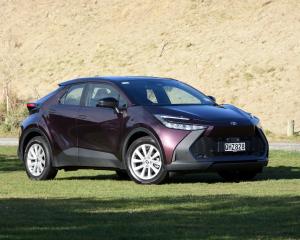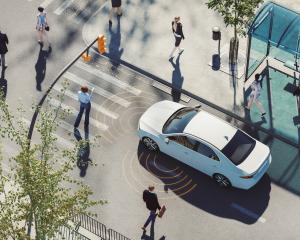
ROAD TEST
The Porsche is the sportiest, the Audi the most suave, with the added attraction of seven seats.
The Volkswagen? Cost consciousness, pragmatism and everyman appeal are often parlayed.
In reality, the VW Touareg, Audi Q7 and Porsche Cayenne represent as circles that converge more than occasionally. They are, after all, close cousins, sharing the same underlying platform and much else besides.
The Touareg is a more complex character than is often presented. The idea that it is last to get best kit is wrong; not only are air suspension, trick driving aids and four-wheel steer delivered to all three, but the VW, while the most diesel-committed, has had some spectacular engines: Most latterly a V8, but also in the past a V10 and (though just for Europe, and only briefly) a W12.
And now? Three editions, everything being in V6 seems a sign of downsizing times, but in reality the 3.0-litre in the new flagship is altogether quite different to the mill delivered to cheaper choices.
Being a petrol is a Touareg first. Being a petrol-electric, ditto.

Getting that pace from a large SUV asks for enormous outputs of 340kW and 700Nm. The kilowatt count is not just the biggest for a Touareg, but also makes it the most powerful VW selling here. Torque-wise, it is the biggest twister of the existing family, though a little less muscular than past family heroes.
So give and take. But the key appeal VW proposes is that this new engine is giving in the "right" way, in disparate saint and sinner directions.
Give it a hoof and it’s a rocket; to the point that when the electric energy is optimal, it’ll chirp the fat rubber on launch, and make overtaking obscenely easy. That’s one draw, obviously.
The other comes should you chose to tread lightly. Then it has potential to be "green". VW testing has brought a consumption figure of 1.9 litres per 100km, while also emitting 44g per kilometre into the environment, according to WLTP measurement.
Can a high-performance SUV plug-in hybrid truly hope to be more ecologically sound than a Toyota Yaris Hybrid? Not from this test. But there’s a good reason.
Back to the performance side. You can immediately understand why VW’s performance people put so much effort into suspension tuning, tyre choice and brake upgrade. This thing demands that level of attention.
You’ll muse if it is as full-out fiery and as fleet and sure-footed as the comparable Porsche product. Probably not. Yet it likely runs the Cayenne hybrid close enough to leave the impression that only badge propriety restrained VW’s effort. That, and pricing difference; Stickered at $159,990, the R eHybrid is the most expensive Touareg yet, and it is still siting well below the admission to club Cayenne, which opens at $170,900.

The Porsche is the best-handling off-roader you can buy, but it is not soothing. The Touareg has surely sold on the strength of being a more amiable car. In that respect, it is quite positive that for all its warpaint and additional wallop, the R maintains a softer side to its actions.
Agreed, for this you must keep the tuned air suspension out of the firmest setting. That makes sense anyhow, as ride is nicer one click down and the anti-roll systems still do their thing, so it still corners with assurance and on a relatively even keel, but with fairly decent ride and refinement. Given it takes 22 inch rims and 285/35 tyres, the biggest rims and rubber yet meted the type, that is a win.
So, to the other matter. Is it as easy to find the thrift as it is the thrust?
Realistically, it is hard to imagine anything in the sub 4 litres per 100km zone coming up as an average on the trip computer. It’s so big, so heavy. That’s not to say I wouldn’t have been keen to try. But in this car, I couldn’t.
To explain. The 17.9kWh battery pack used by VW to deliver 14.1kWh usable capacity to the 100kW electric motor is a smallish item for a large car. By way of comparison, the physically smaller and lighter Mitsubishi Outlander PHEV now uses a 20kWh battery unit.
Keeping the VW within the electric-petrol happy zone logically demands daily replenishment. Just two hours with a wallbox, expanding to eight hours from household mains supply.
But, for this, you need something the car should have had, but didn’t, a charging kit. Somewhere along the way, a previous user had taken it and the luggage bay cover. I only discovered this after the battery had depleted. VW NZ couldn’t get a new cable to me in time and the local dealer didn’t have one to spare. I was welcome to replenish the car at the dealership.

By end of play, I’d reconciled that the R isn’t really as it proposes, anyway. There’s sporting pedigree, yes, but like any other high-performance SUV, it’s unavoidably comprised by the realities of size and substance.
Reality says it is more in the mode of being a fast, luxurious family wagon. Which is OK, given that it has an undeniably affluent look and ambience. In respect to that, my neighbour has a pre-facelift diesel Touareg R-Line I’ve always considered very plush. And, yet, when we compared older and new ...
As much as it is claimed VW is a rung lower than Audi and Porsche on the prestige ladder, it’s hard to see evidence of that here. The quality of the fixtures and fittings is superb.
Like every updated Touareg, the R eHybrid receives the discreetly massaged exterior looks, centred around a new grille/headlight arrangement and full-width strips of illumination at both ends of the car — including a light-up VW boot badge.
R club admission means it takes additional bespoke hammer-time detailing of gloss black highlights and brake calipers in blue and with the "R" emblem. Dark-red rear light clusters also lend to the sportier exterior appearance, and Lapiz Blue, a shade commonly seen on the Golf R, is exclusive.
Inside, the big eye-catcher of all 2024 offers is that "Innovision Cockpit" of conjoined digital screens that come with software and functionality upgrades to bring more advanced HD map data with lane-level sat-nav and a new voice-control system based around conversational commands.
There's also wireless mirroring of smartphones via Apple CarPlay and Android Auto.

For R level there’s additional premium with Puglia leather trim with contrast blue stitching and piping, as well as brushed dark aluminium dash inserts, quilted leather on the door cards, full active climate-controlled sports seats with 14-way adjustment and brushed stainless steel pedals.
VW’s migration toward almost buttonless cabin environments has raised criticism, and in Touareg there is also more need to run much functionality via a centre screen that, at 15-inches, is the biggest they put into a car. The prod and swipe requirements ask for some learning, but you find a way. The touch-sensitive controls on the steering wheel are a different matter.
Arguably the very best tech shows up after dark. A new ambient lighting effect is fun but more astounding are the "HD Matrix" headlights made up of thousands of micro LEDs. These are able to create what VW calls an "interactive light carpet" to take the stress and strain out of driving at night. The illumination is impressive in its reach and constantly changing pattern yet doesn’t seem to annoy oncoming traffic.
While the Touareg resolutely remains a five-seater, and likely misses a trick in doing so, it does offer spacious passenger accommodation. Like so many PHEVs the R has to sacrifice boot space, in the main to accommodate the battery pack, but it is roomy enough.
Giving the Touareg a look that brings it into line with the rest of the VW SUV range is fitting, though this generation is an interesting development. While wider, longer and slightly lower than previous iterations, with a more athletic look, it is more a refresh than a start again.
Progression into PHEV format is the prelude to something bigger. It’s hard to imagine this third generation plugging on in combustion-engined form for as long as the previous two did. Whether it will transform into a full battery car is yet to be announced.
The PHEV involvement gets some fundamentals right, one being that it has the same towing capacity of 3500kg as the diesels. On the other hand, the idea that the Touareg is just one of those models for which a turbo-diesel still seems a more natural fit as a whole is hard to shake.

AT A GLANCE
VW Touareg R eHybrid
Overall rating: ★★★★
Design and styling: ★★★★★
Interior: ★★★★
Performance: ★★★★
Ride and handling: ★★★★
Safety: ★★★★★
Environmental: ★★★★
SPECIFICATION
Price: $159,990
Powertrain: 2995cc petrol six-cylinder with electric motor assist, 340kW/700Nm combined output.
Transmission: Eight-speed auto, 4Motion all-wheel drive.
Brakes and stability systems: Discs front and rear; ABS, AEB, LKA, LDW, ELK.
Safety rating: NCAP five star.
Wheels and tyres: Alloy wheels, 285/35 R22.
Dimensions: Length 4902mm; width 1984mm; height 1712mm.
By Richard Bosselman












